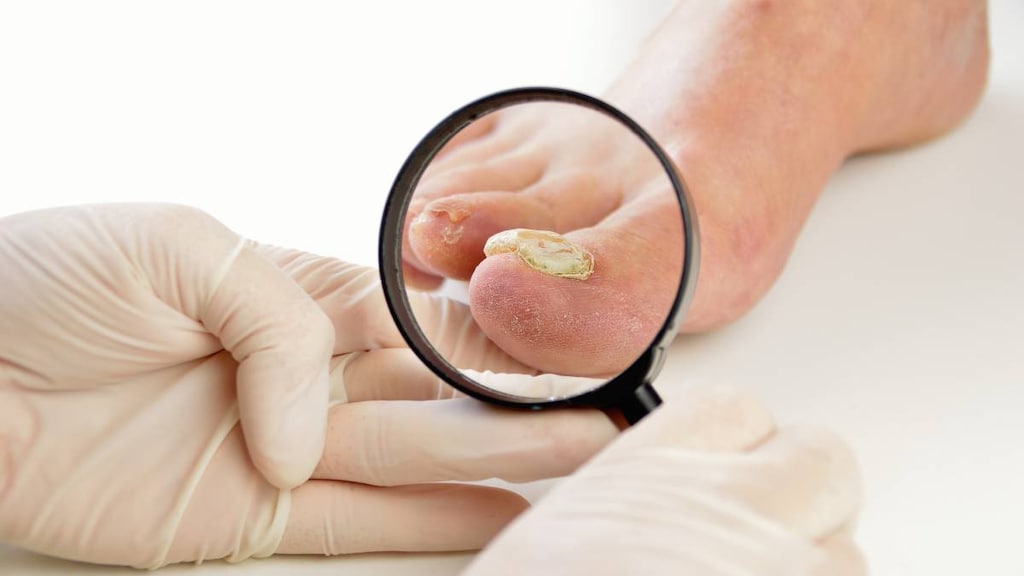Dosage Forms
Excipient information presented when available (limited, particularly for generics); consult specific product labeling.
Solution Auto-injector, Subcutaneous [preservative free]:
Taltz: 80 mg/mL (1 mL) [contains polysorbate 80]
Solution Prefilled Syringe, Subcutaneous [preservative free]:
Taltz: 80 mg/mL (1 mL) [contains polysorbate 80]
Pharmacology
Mechanism of Action
Ixekizumab is a humanized IgG4 monoclonal antibody that selectively binds with the interleukin 17A (IL-17A) cytokine and inhibits its interaction with the IL-17 receptor. IL-17A is a naturally occurring cytokine that is involved in normal inflammatory and immune responses. Ixekizumab inhibits the release of proinflammatory cytokines and chemokines.
Pharmacokinetics/Pharmacodynamics
Distribution
Vdss: 7.1 L
Metabolism
Expected to be degraded into small peptides and amino acids via catabolic pathways similar to that which is seen with endogenous IgG
Time to Peak
~4 days
Half-Life Elimination
13 days
Use in Specific Populations
Special Populations Note
Body weight: Clearance and volume of distribution increase as body weight increases.
Use: Labeled Indications
Ankylosing spondylitis: Treatment of active ankylosing spondylitis in adult patients
Plaque psoriasis: Treatment of moderate to severe plaque psoriasis in adult patients who are candidates for systemic therapy or phototherapy
Psoriatic arthritis: Treatment of active psoriatic arthritis in adult patients
Contraindications
Serious hypersensitivity reaction (eg, anaphylaxis) to ixekizumab or any component of the formulation
Dosage and Administration
Dosing: Adult
Ankylosing spondylitis: SubQ: 160 mg once, followed by 80 mg every 4 weeks; may administer alone or in combination with conventional disease-modifying antirheumatic drugs (eg, sulfasalazine), corticosteroids, nonsteroidal anti-inflammatory drugs, and/or analgesics.
Plaque psoriasis: SubQ: 160 mg once, followed by 80 mg at weeks 2, 4, 6, 8, 10, and 12, and then 80 mg every 4 weeks.
Psoriatic arthritis: SubQ: 160 mg once, followed by 80 mg every 4 weeks; may administer alone or in combination with conventional disease-modifying antirheumatic drugs (eg, methotrexate). Note: For psoriatic arthritis patients with coexisting moderate to severe plaque psoriasis, use the dosing regimen for plaque psoriasis.
Dosing: Geriatric
Refer to adult dosing.
Reconstitution
Remove autoinjector or prefilled syringe from the refrigerator prior to use and allow to stand for 30 minutes to reach room temperature. Do not remove the needle cap. Inspect visually for particulate matter and discoloration. The liquid should be essentially free of visible particles and colorless to slightly yellow. Do not shake.
Administration
Subcutaneous: Allow to reach room temperature prior to injection (30 minutes). Do not shake. Inject full amount into the upper arms, thighs or any quadrant of the abdomen; administer each injection at a different anatomic location than a previous injection and avoid areas where the skin is tender, bruised, erythematous, indurated, or affected by psoriasis. Administration in the upper, outer arm may be performed by a caregiver or health care provider. Ixekizumab is intended for use under the guidance and supervision of a physician; may be self-injected by the patient following proper training in SubQ injection technique.
Storage
Store at 2°C to 8°C (36°F to 46°F). May be stored at room temperature (≤30°C [86°F]) for ≤5 days in original carton; do not return to refrigerator. Discard, if unused, within 5 days. Record date removed from refrigerator on carton. For multi-pack cartons, remove a single autoinjector at a time from the refrigerator. Do not freeze. Protect from light.
Drug Interactions
Baricitinib: Immunosuppressants may enhance the immunosuppressive effect of Baricitinib. Management: Use of baricitinib in combination with potent immunosuppressants such as azathioprine or cyclosporine is not recommended. Concurrent use with antirheumatic doses of methotrexate or nonbiologic disease modifying antirheumatic drugs (DMARDs) is permitted. Consider therapy modification
BCG (Intravesical): Immunosuppressants may diminish the therapeutic effect of BCG (Intravesical). Avoid combination
Belimumab: May enhance the immunosuppressive effect of Biologic Anti-Psoriasis Agents. Avoid combination
Cladribine: May enhance the immunosuppressive effect of Immunosuppressants. Avoid combination
Coccidioides immitis Skin Test: Immunosuppressants may diminish the diagnostic effect of Coccidioides immitis Skin Test. Monitor therapy
Denosumab: May enhance the adverse/toxic effect of Immunosuppressants. Specifically, the risk for serious infections may be increased. Monitor therapy
Echinacea: May diminish the therapeutic effect of Immunosuppressants. Consider therapy modification
Fingolimod: Immunosuppressants may enhance the immunosuppressive effect of Fingolimod. Management: Avoid the concomitant use of fingolimod and other immunosuppressants when possible. If combined, monitor patients closely for additive immunosuppressant effects (eg, infections). Consider therapy modification
InFLIXimab: May enhance the immunosuppressive effect of Biologic Anti-Psoriasis Agents. Avoid combination
Leflunomide: Immunosuppressants may enhance the adverse/toxic effect of Leflunomide. Specifically, the risk for hematologic toxicity such as pancytopenia, agranulocytosis, and/or thrombocytopenia may be increased. Management: Consider not using a leflunomide loading dose in patients receiving other immunosuppressants. Patients receiving both leflunomide and another immunosuppressant should be monitored for bone marrow suppression at least monthly. Consider therapy modification
Natalizumab: Immunosuppressants may enhance the adverse/toxic effect of Natalizumab. Specifically, the risk of concurrent infection may be increased. Avoid combination
Nivolumab: Immunosuppressants may diminish the therapeutic effect of Nivolumab. Consider therapy modification
Ocrelizumab: May enhance the immunosuppressive effect of Immunosuppressants. Monitor therapy
Pidotimod: Immunosuppressants may diminish the therapeutic effect of Pidotimod. Monitor therapy
Pimecrolimus: May enhance the adverse/toxic effect of Immunosuppressants. Avoid combination
Roflumilast: May enhance the immunosuppressive effect of Immunosuppressants. Consider therapy modification
Siponimod: Immunosuppressants may enhance the immunosuppressive effect of Siponimod. Monitor therapy
Sipuleucel-T: Immunosuppressants may diminish the therapeutic effect of Sipuleucel-T. Management: Evaluate patients to see if it is medically appropriate to reduce or discontinue therapy with immunosuppressants prior to initiating sipuleucel-T therapy. Consider therapy modification
Smallpox and Monkeypox Vaccine (Live): Immunosuppressants may diminish the therapeutic effect of Smallpox and Monkeypox Vaccine (Live). Monitor therapy
Tacrolimus (Topical): May enhance the adverse/toxic effect of Immunosuppressants. Avoid combination
Tertomotide: Immunosuppressants may diminish the therapeutic effect of Tertomotide. Monitor therapy
Tofacitinib: Immunosuppressants may enhance the immunosuppressive effect of Tofacitinib. Management: Concurrent use with antirheumatic doses of methotrexate or nonbiologic disease modifying antirheumatic drugs (DMARDs) is permitted, and this warning seems particularly focused on more potent immunosuppressants. Consider therapy modification
Trastuzumab: May enhance the neutropenic effect of Immunosuppressants. Monitor therapy
Upadacitinib: Immunosuppressants may enhance the immunosuppressive effect of Upadacitinib. Avoid combination
Vaccines (Inactivated): Immunosuppressants may diminish the therapeutic effect of Vaccines (Inactivated). Management: Vaccine efficacy may be reduced. Complete all age-appropriate vaccinations at least 2 weeks prior to starting an immunosuppressant. If vaccinated during immunosuppressant therapy, revaccinate at least 3 months after immunosuppressant discontinuation. Consider therapy modification
Vaccines (Live): Immunosuppressants may enhance the adverse/toxic effect of Vaccines (Live). Immunosuppressants may diminish the therapeutic effect of Vaccines (Live). Management: Avoid use of live organism vaccines with immunosuppressants; live-attenuated vaccines should not be given for at least 3 months after immunosuppressants. Exceptions: Smallpox and Monkeypox Vaccine (Live). Avoid combination
Adverse Reactions
>10%:
Hematologic & oncologic: Neutropenia (11%)
Immunologic: Antibody development (5% to 22%; neutralizing antibodies associated with decreased drug concentration and loss of efficacy: 2%)
Infection: Infection (27% to 38%; maintenance period: 57%)
Local: Injection site reaction (17%)
Respiratory: Upper respiratory tract infection (14%)
1% to 10%:
Dermatologic: Tinea (2%)
Gastrointestinal: Nausea (2%), Crohn's disease (≤1%)
Hematologic & oncologic: Thrombocytopenia (3%)
Infection: Influenza (1%)
Ophthalmic: Conjunctivitis (1%)
Frequency not defined: Local: Erythema at injection site, pain at injection site
<1%, postmarketing, and/or case reports: Anaphylaxis, angioedema, inflammatory bowel disease, oral candidiasis, rhinitis, serious infection, severe hypersensitivity reaction, ulcerative colitis, urticaria
Warnings/Precautions
Concerns related to adverse effects:
- Hypersensitivity reactions: Serious hypersensitivity reactions, including urticaria, angioedema, and anaphylaxis (which may lead to hospitalization), have been reported; discontinue immediately if signs/symptoms of a serious hypersensitivity reaction develop and initiate appropriate treatment.
- Infections: May increase the risk of infections. A higher rate of infections was observed with ixekizumab treatment in clinical trials, including upper respiratory tract infection, oral candidiasis, conjunctivitis, and tinea infections. Use with caution in patients with a chronic infection or a history of recurrent infection. In patients who develop a serious infection, monitor closely and discontinue use until the infection resolves.
- Tuberculosis: Patients should be evaluated for tuberculosis infection prior to initiating therapy; do not initiate therapy in patients with an active tuberculosis infection. Consider antituberculosis therapy if an adequate course of treatment cannot be confirmed in patients with a history of latent or active tuberculosis. Monitor all patients for signs and symptoms of active tuberculosis during and after treatment.
Disease-related concerns:
- Inflammatory bowel disease: Treatment with ixekizumab may cause Crohn disease and ulcerative colitis, including exacerbations; monitor patients for onset or exacerbation of inflammatory bowel disease.
Other warnings/precautions:
- Immunizations: Patients should be brought up to date with all immunizations before initiating therapy. Live vaccines should not be given concurrently.
Monitoring Parameters
Signs and symptoms of infection, active tuberculosis (during and after treatment), and signs/symptoms of inflammatory bowel disease; hypersensitivity reactions
Pregnancy
Pregnancy Considerations
Ixekizumab is a humanized monoclonal antibody (IgG4). Placental transfer of human IgG is dependent upon the IgG subclass, maternal serum concentrations, birth weight, and gestational age, generally increasing as pregnancy progresses. The lowest exposure would be expected during the period of organogenesis (Palmeira 2012; Pentsuk 2009).
The American Academy of Dermatology considers ixekizumab for the treatment of psoriasis to be likely compatible for use in male patients planning to father a child (AAD-NPF [Menter 2019]). Women and men with well-controlled psoriasis who are planning a pregnancy and wish to avoid fetal exposure can consider discontinuing ixekizumab 9 weeks prior to attempting pregnancy (Rademaker 2018).
Patient Education
What is this drug used for?
- It is used to treat plaque psoriasis.
- It is used to treat psoriatic arthritis.
- It is used to treat ankylosing spondylitis.
Frequently reported side effects of this drug
- Common cold symptoms
- Nausea
- Injection site irritation
Other side effects of this drug: Talk with your doctor right away if you have any of these signs of:
- Severe dizziness
- Passing out
- Infection
- Skin sores
- Thrush
- Eye redness
- Abdominal pain
- Diarrhea
- Bloody diarrhea
- Weight loss
- Signs of a significant reaction like wheezing; chest tightness; fever; itching; bad cough; blue skin color; seizures; or swelling of face, lips, tongue, or throat.
Note: This is not a comprehensive list of all side effects. Talk to your doctor if you have questions.
Consumer Information Use and Disclaimer: This information should not be used to decide whether or not to take this medicine or any other medicine. Only the healthcare provider has the knowledge and training to decide which medicines are right for a specific patient. This information does not endorse any medicine as safe, effective, or approved for treating any patient or health condition. This is only a brief summary of general information about this medicine. It does NOT include all information about the possible uses, directions, warnings, precautions, interactions, adverse effects, or risks that may apply to this medicine. This information is not specific medical advice and does not replace information you receive from the healthcare provider. You must talk with the healthcare provider for complete information about the risks and benefits of using this medicine.



